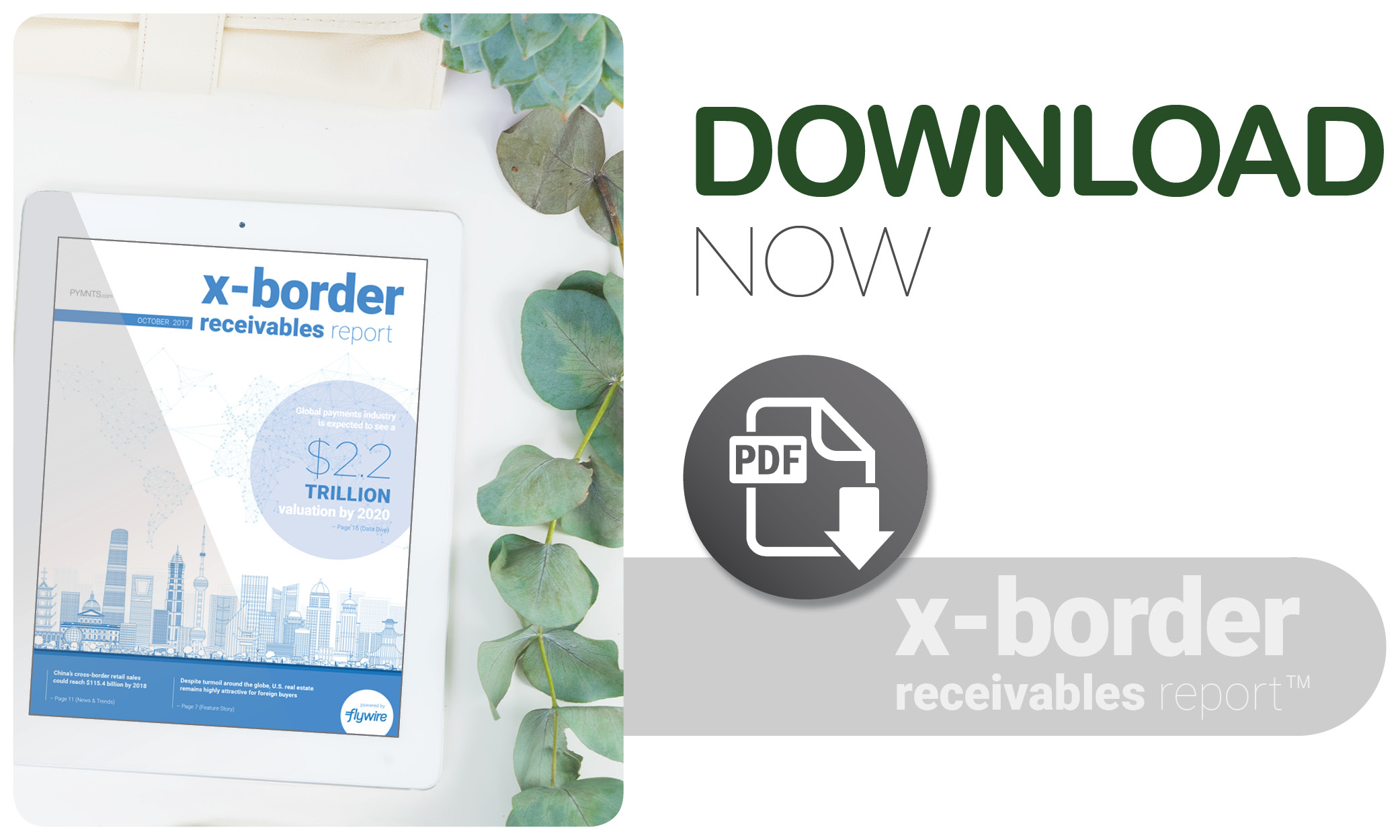NEW REPORT: Making X-Border Property Sales Pay

As modern technologies increasingly make cross-border commerce a feasible feat for companies and investors of all sizes, merchants are increasingly looking beyond their home countries to tap into new markets. But, if those companies can’t get paid, it doesn’t matter how large the marketplace expands or how small the world gets.
In latest edition of the X-Border Receivables Report, powered by Flywire, PYMNTS takes a closer look at how everyone from financial institutions to real estate investors are using new developments to deliver payments across borders as smoothly as possible.
News from around the cross-border receivables space
Over the past month, companies around the world have debuted tools, services and partnerships to make it easier to exchange money across borders.
A new partnership forged between the First Data Corporation and ChinaSmart Pay, for instance, allows Chinese citizens traveling internationally access to local currency when making purchases. An estimated 186 million Chinese tourists are expected to spend roughly $349 billion abroad annually by 2020.
Similarly, in Sri Lanka, small merchants will now have better access to their local currency on international transactions, the result of a new partnership between Payoneer and eZ Cash, a mobile money network operated by Sri Lankan telecom provider Daxios Axiata.
The newly struck agreement gives eZ cash merchants the ability to send and receive funds in their local currency, and allows merchants and freelancers in the country to get paid in their currency of choice.
For a roundup of the latest notable news and trends in the cross-border receivables space, check out the report.
Data Dive: B2B payments
The October report includes a deep Data Dive focusing on the recent rise of international B2B payment providers, also known as electronic invoice presentment and payment (EIPP) companies.
Investors poured roughly $14.4 billion into global FinTech payment companies in 2016 alone, and more companies are now set to enter the arena. These disrupters offer smoother payment capabilities, which promises to be a valuable offering in the future, as businesses providing these simple services could stand out as attractive investment opportunities.
To dive into the data and analysis, jump inside the Report.
Why the US real estate market seems so stable to foreign investors
As the world shrinks and the international marketplace expands — and cross-border commerce continues to become more feasible — foreign property buyers are pouring money into the U.S. real estate market. According to the National Association of Retailers, foreign purchases of American properties has surged by double-digits over a one-year period.
With overseas buyers spending $153 billion on residential properties in the U.S. alone between April of 2016 and March of 2017, PYMNTS caught up with Gustavo Caricote, director of international development at real estate firm RE/MAX, to examine the sharp uptick in activity and why the U.S. market is so attractive to foreign investors.
“The U.S. continues to be the best, safest place for investors globally, despite all the problems going on all over the world,” Caricote said. “[Investors] still see the U.S. market as the most solid investment.”
For the full Feature Story, download the report below.
. . . . . . . . . . . . . . . .
TO DOWNLOAD THE OCTOBER EDITION OF THE PYMNTS.COM X-BORDER RECEIVABLES REPORT, POWERED BY FLYWIRE, CLICK THE BUTTON BELOW.
About The Report
The PYMNTS.com X-Border Receivables Report, powered by Flywire, highlights the most significant developments in cross-border commerce, demonstrating how various businesses and organizations — including marketplaces, educational institutions, healthcare facilities and importers/exporters, among others — are getting paid by suppliers and wholesalers across borders. The report spotlights recent challenges across various use cases in the cross-border receivables space, and explains how these developments are being addressed.

